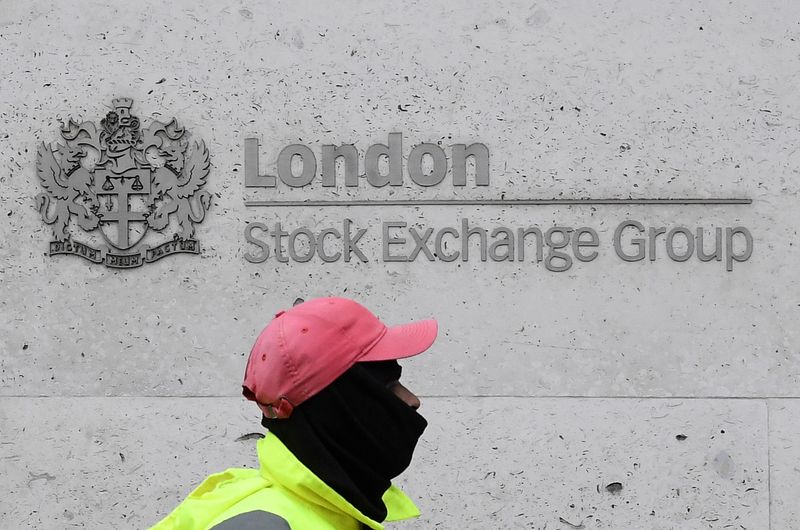By Marc Jones
LONDON (Reuters) - World shares inched towards a four-month high on Friday and industrial bellwether metal copper was set for its longest weekly winning streak in nearly three years, as recovering global data kept nagging coronavirus nerves at bay.
The market rally fuelled by record U.S. jobs numbers had largely blown itself amid a spike in U.S. COVID cases, though the fastest expansion in China's services sector in over a decade and more stimulus ensured optimism remained.
Chinese shares had charged to their highest level in five years, helping the pan-Asian indexes to 4-month peaks, so the sight of European markets stalling early on took some traders by surprise.
Currency and commodity markets also had a subdued feel after an otherwise strong week for confidence-sensitive stalwarts such oil, copper, sterling and the Australian dollar, which all struggled on Friday.
"I think infection rates and fears of localised lockdowns have doused some of the enthusiasm," said Societe Generale (PA:SOGN) strategist Kit Jukes.
"We have three elements now; vaccine hopes, decent data in most places but also the return of infection rates which can make you nervous."
Against a basket of currencies, the dollar rose slightly in early London trading. It was up less than 0.1% at 97.306 and still firmly on track for its biggest weekly fall since the first week of June.
The euro was down at $1.1226 and though it gained against the safe Swiss franc it fell versus the sometimes commodity-driven Norwegian crown.
S&P 500 futures were down 0.2% but volumes were lower than usual due to a U.S. markets holiday on Friday for Independence Day.
U.S. nonfarm payrolls surged by 4.8 million jobs in June, above the average forecast of 3 million jobs in June, thanks to rises in the hard-hit hospitality sectors.
But economists noted there were caveats to the upbeat headline figures.
The number of permanent job losers continued to rise, increasing by 588,000 to 2.9 million in June while the unemployment rate remains a chunky 7.6 percentage points above its February level. A Deutsche Bank (DE:DBKGn) analysis put the U.S. unemployment rate behind all its developed market peers barring Canada.
The recovery also faces more headwinds as a surge of new coronavirus infections prompts U.S. states to delay and in some cases reverse plans to let stores reopen and activities resume.
More than three dozen U.S. states saw increases in COVID-19 cases, with cases in Florida spiking above 10,000.
Nevertheless markets are largely overlooking the spikes, taking the view that overall the situation was still improving overall.
Ten-year German government bond yields are up 5 basis points this week and set for their biggest weekly rise in a month, though they nudged down on Friday to -0.44%. Riskier Italian yields fell to 1.26% as well though, which is their lowest since late March.
Oil prices also eased after an otherwise solid week. Brent crude fell 0.65% to $42.86 a barrel while U.S. crude dropped 0.66% to $40.38 a barrel. Both were around $25 this time two months ago.
Copper prices were poised for a seventh consecutive weekly gain, their longest winning streak in nearly three years, despite a slight easing on the day after top supplier Chile had assured traders about supply.
Three-month LME copper was hovering at $6,040 a tonne, more than $1,500 up from lows it ploughed to in March.
"The one issue that hangs over all the markets is will we see a surge in secondary infections that will trigger a second wave of national rather than regional shutdowns?" Malcolm Freeman, director of Kingdom Futures, wrote in a note.
(GRAPHIC: China recovery - https://fingfx.thomsonreuters.com/gfx/mkt/oakpeaxznpr/20703S.png)
(GRAPHIC: COVID-19 in U.S. - https://fingfx.thomsonreuters.com/gfx/mkt/azgvorzmapd/20703D.png)

